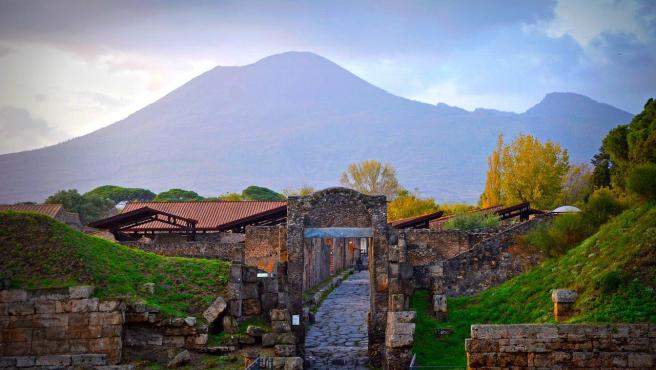The history of Pompeii is marked by the powerful eruption of Vesuvius that devastated in 79 AD. to this ancient Roman city burying it with an immense cloud of ash and rocks. But it was not until 1748 when the first excavations in place brought to light what happened in this city. The eruption of this imposing volcano not only covered Pompeii, but also spread to other ancient Roman cities in Campania such as Herculaneum.
Thanks to the successive excavations and the investigations of archeology experts, today we can contemplate the excavations in a perfect state of conservation for how life developed in imperial Rome, in a small city where around 15,000 people lived in that then.
How did the people of Pompeii die?
However, the eruption of this volcano was not sudden. As explained in the guide about this city, at least two weeks before this fatal event there were alarm signals that should have alerted the population, such as an earthquake, strong smells and the sudden disappearance of water from streams and fountains.
The inhabitants of this ancient Roman city passed away instantly.
The element that caused the death of thousands of people who resided there and that completely buried the urban centers around the volcano was the pyroclastic flow, that is, a cloud full of gas and volcanic material. Some extensive research has suggested that the inhabitants of Pompeii and Herculaneum died of suffocation, but a study published in the journal PLOS One in 2018 revealed that they died instantly, being scorched by this volcanic cloud, which would explain the position of the victims found. in the ruins.
What have been the most recent findings?
Still today, new remains are being discovered in the archaeological zone of Pompeii that provide more details about what happened and how that fateful day happened. In fact, just two months ago a thermopoly was found in a magnificent state of preservation. It is a space in which the inhabitants served food and drink, and which even still had food remains.
Archeology experts working in Pompeii are immersed in the analysis of the discovered material in order to expand the available knowledge about the habits of the population in Roman times. But it is not the only surprising finding. Just a few days ago, in February of this year, researchers found a large four-wheeled ceremonial float practically intact with iron elements and bronze decorations.
In November 2020, Pompeii archaeologists discovered the bodies of two other men in the ruins, specifically a nobleman between the ages of 30 and 40 and a young slave. The most impressive thing is that their bodies have been reconstructed in such detail that the clothes they were wearing at that time can be distinguished.
Despite being known historically for having buried the ancient city of Pompeii, the truth is that throughout history there have been numerous eruptions, even during prehistory. In fact, it is believed to have been over 2,000 meters high in the past, before the eruptions, although it currently stands at approximately 1,280 meters.
More than three million people currently reside in the surroundings of the volcano.
Located a few kilometers from the city of Naples, in southern Italy, Vesuvius is an active volcano, but asleep. The last eruption occurred in 1944, during the Second World War, causing several deaths and a multitude of damages, as explained by the Vesuvian Osservatorio, founded in 1841 and in charge of analyzing its evolution.
For this reason, it is considered one of the most dangerous volcanoes globally, because more than three million people live in its surroundings, although thanks to advances in detection and plans for possible eruptions today it would be unthinkable that tragedy occurred as occurred in Pompeii.















